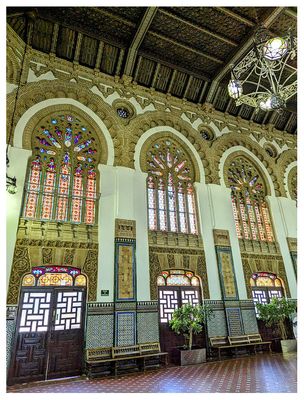
Toledo train station |
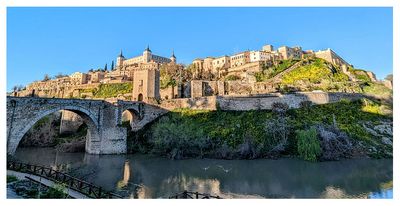
Puente de Alcántara |
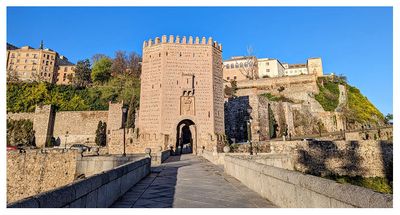
Puente de Alcántara |
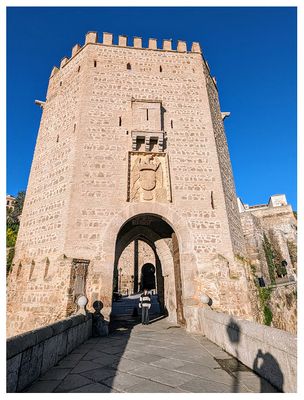
Puente de Alcántara |
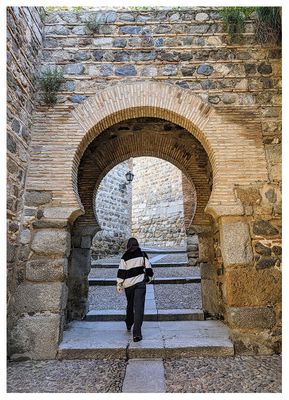
Heading into the city center |
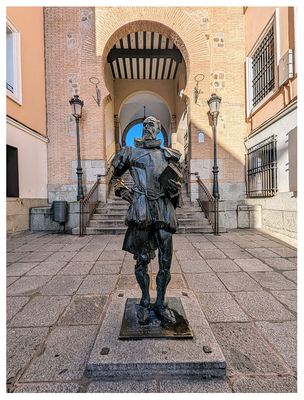
Cervantes |
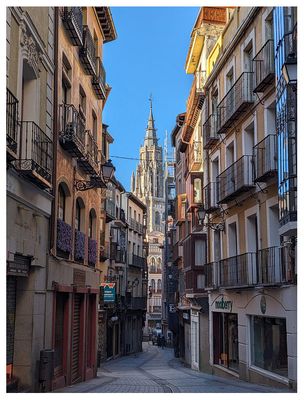
Calle del Comercio and the cathedral |
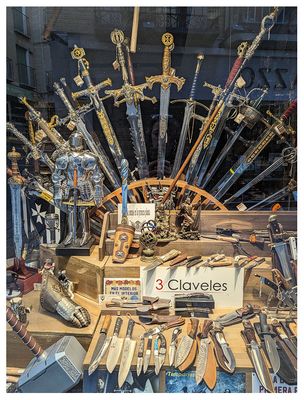
Medieval armory |
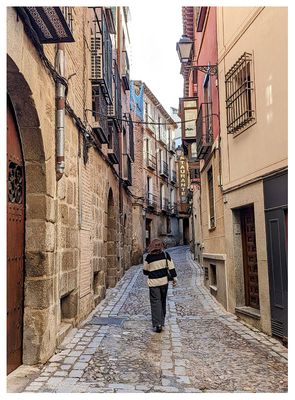
Early morning in Toledo |
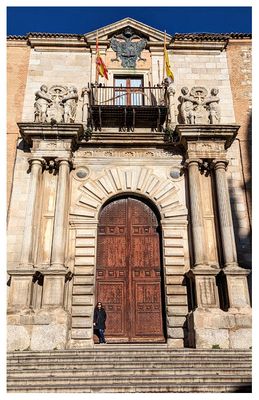
Archbishop’s Palace of Toledo |
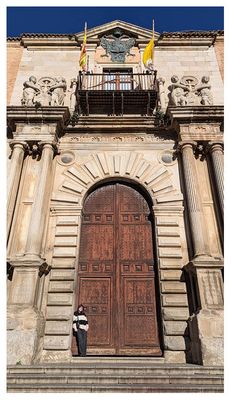
Archbishop’s Palace of Toledo |
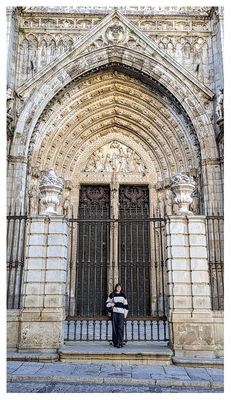
Puerta del Perdón (Portal of Forgiveness) |
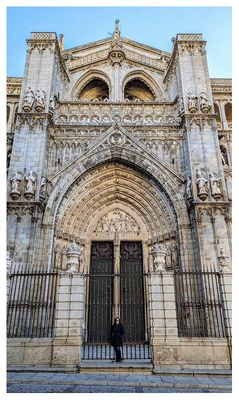
Puerta del Perdón (Portal of Forgiveness) |
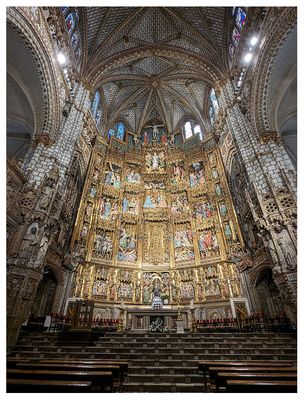
Toledo Cathedral: High altar (80 feet tall!) |
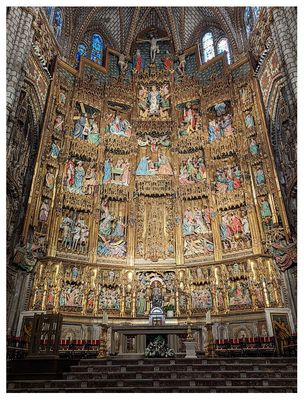
Toledo Cathedral: High altar |
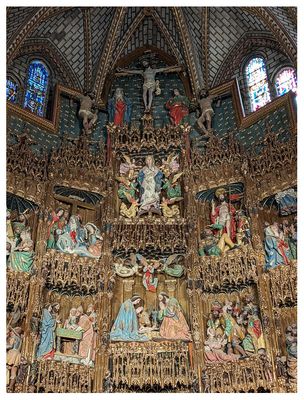
Toledo Cathedral: High altar |
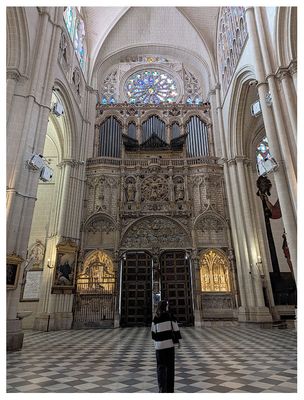
Toledo Cathedral: Organ of the Emperor and the Rose Window |
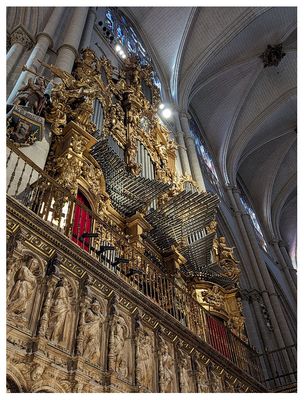
Toledo Cathedral: Organ of the Emperor |
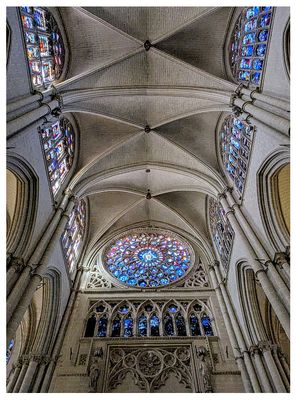
Toledo Cathedral: Stained glass windows |
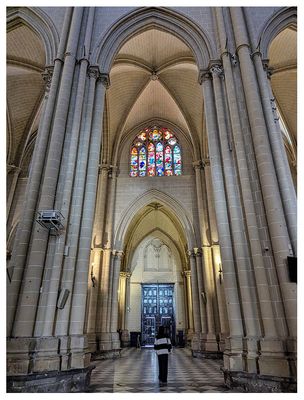
Norah at the Toledo Cathedral |
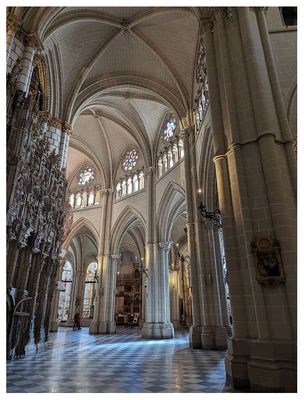
Toledo Cathedral: Apse |
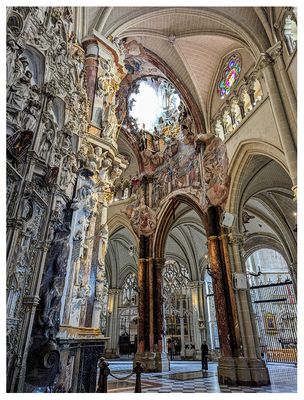
Toledo Cathedral: El Transparente and skylight |
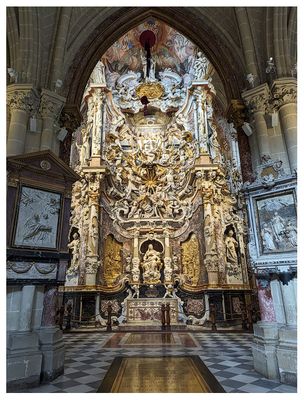
Toledo Cathedral: El Transparente |
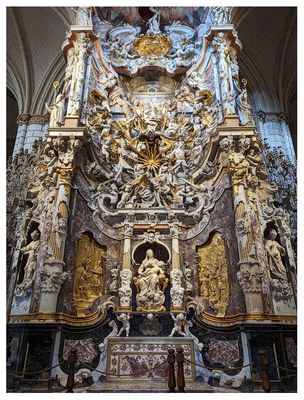
Toledo Cathedral: El Transparente |
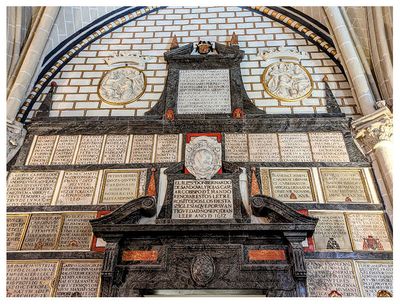
Toledo Cathedral: Sacristry door |
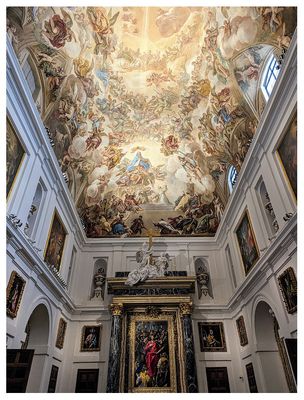
Toledo Cathedral: Sacristry |
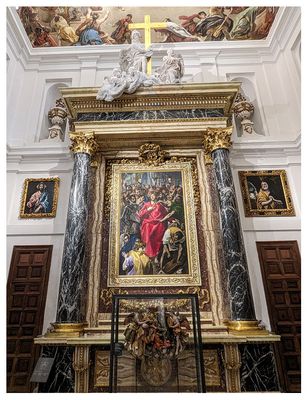
Toledo Cathedral: El Greco's El Expolio (The Disrobing of Christ) |
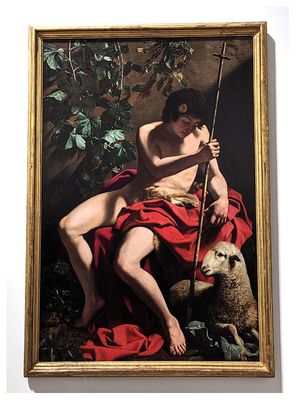
Toledo Cathedral: Caravaggio's San Juan Bautista (John the Baptist) |
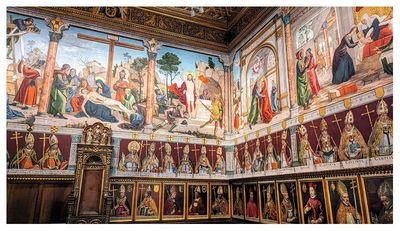
Toledo Cathedral: Chapter House archbishops |
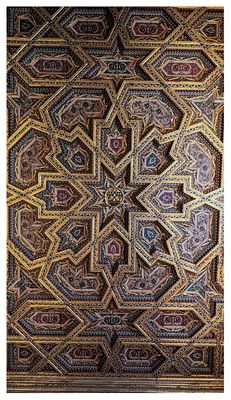
Toledo Cathedral: Chapter House ceiling |
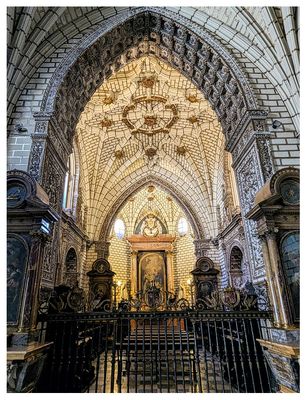
Toledo Cathedral: Chapel of the New Monarchs |
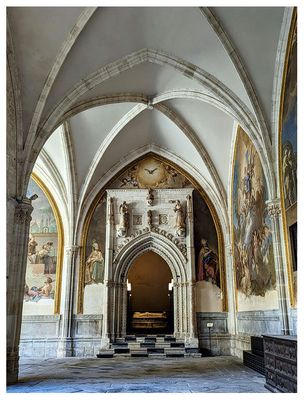
Toledo Cathedral: Cloister and Chapel of Saint Blaise |
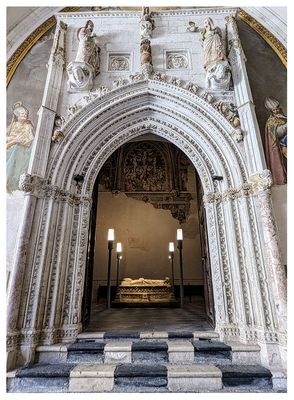
Toledo Cathedral: Chapel of Saint Blaise |
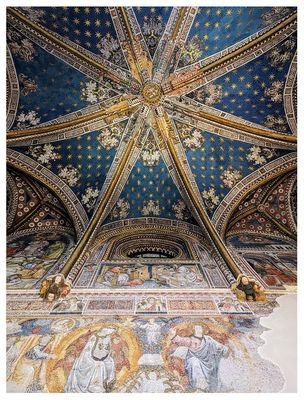
Toledo Cathedral: Chapel of Saint Blaise |
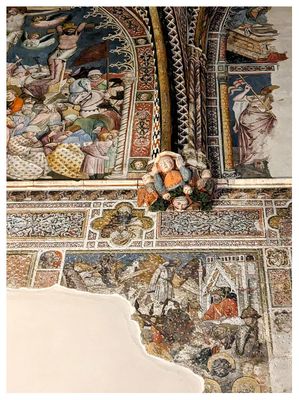
Toledo Cathedral: Chapel of Saint Blaise |
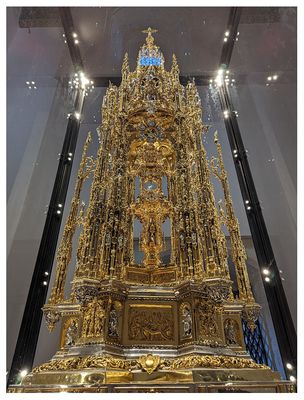
Toledo Cathedral: Treasury and Monstrance of Arfe |
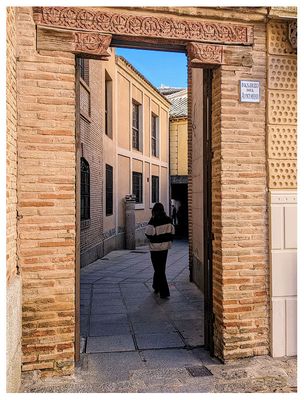
Pasadizo del Ayuntamiento |
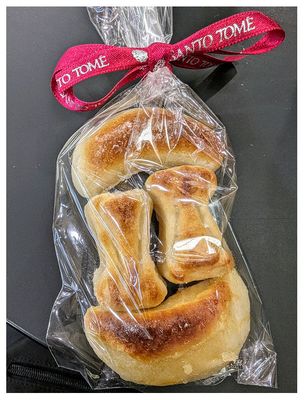
Mazapán from Santo Tomé |
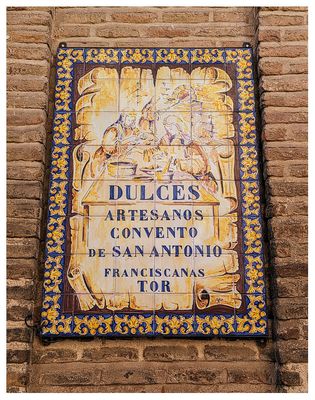
Dulces Artesanos Convento de San Antonio |
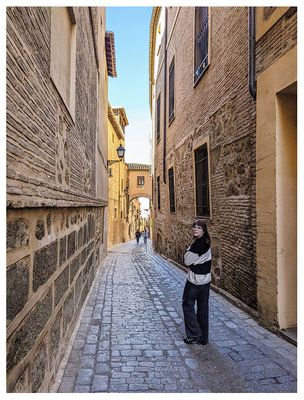
Calle del Ángel |
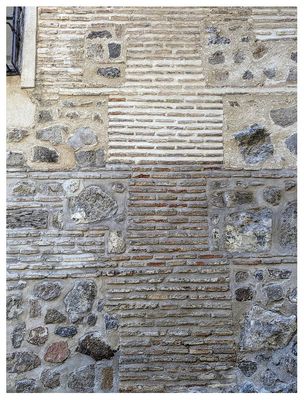
Calle del Ángel |
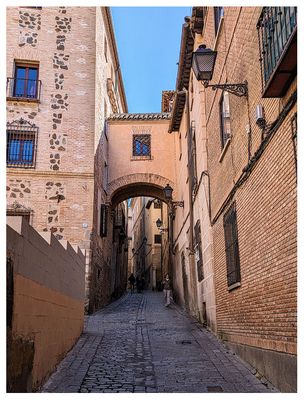
Calle del Ángel |
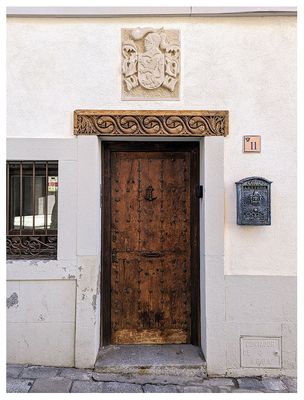
Calle del Ángel |
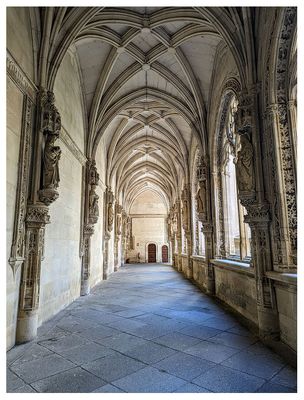
Monastery of San Juan de Los Reyes |
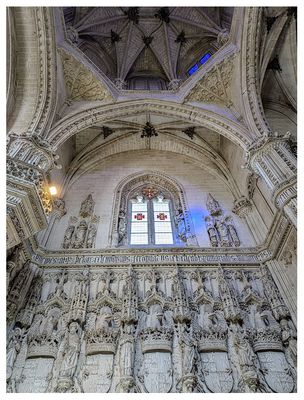
Monastery of San Juan de Los Reyes: Details in the chapel |
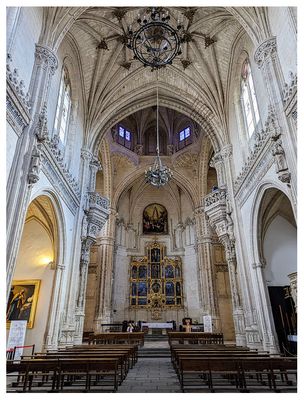
Monastery of San Juan de Los Reyes: Chapel |
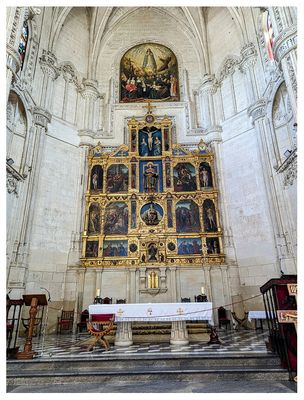
Monastery of San Juan de Los Reyes: Chapel altarpiece |
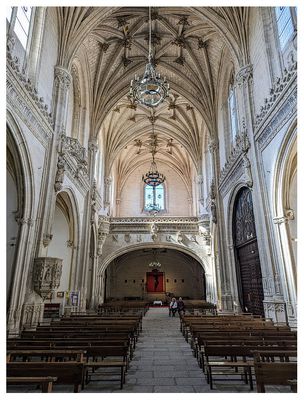
Monastery of San Juan de Los Reyes: Chapel |
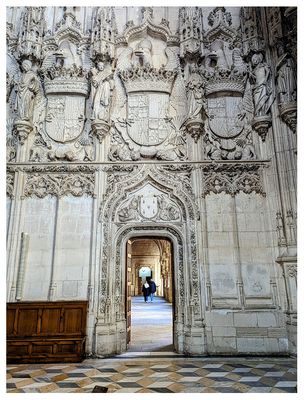
Monastery of San Juan de Los Reyes: Chapel exit |
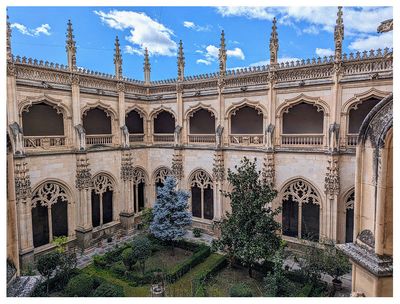
Monastery of San Juan de Los Reyes: Cloister |
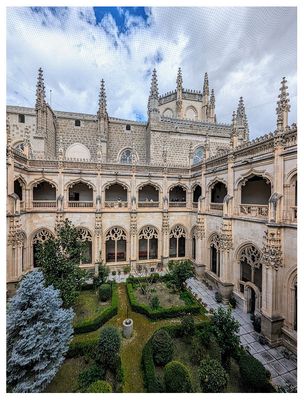
Monastery of San Juan de Los Reyes: Cloister |
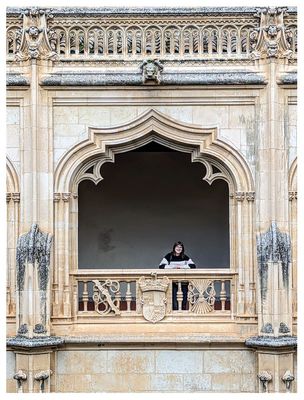
Monastery of San Juan de Los Reyes: Cloister |
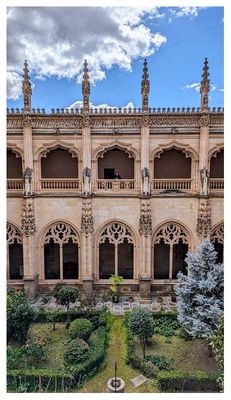
Monastery of San Juan de Los Reyes: Kathy in the cloister |
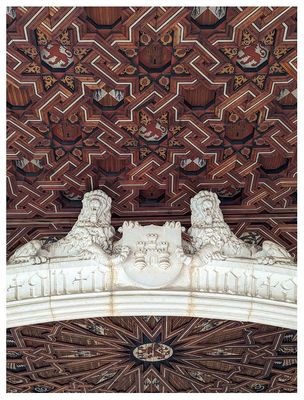
Monastery of San Juan de Los Reyes: Mudéjar ceiling in the cloister |
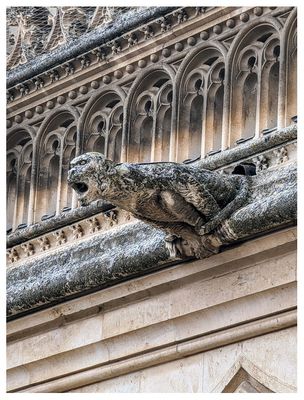
Monastery of San Juan de Los Reyes: Cloister gargoyle |
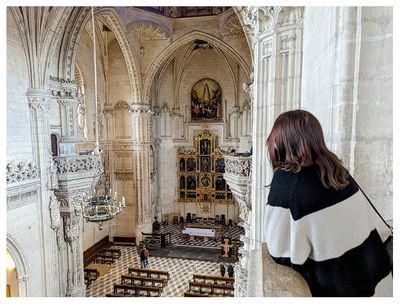
Monastery of San Juan de Los Reyes: Balcony view of the chapel |
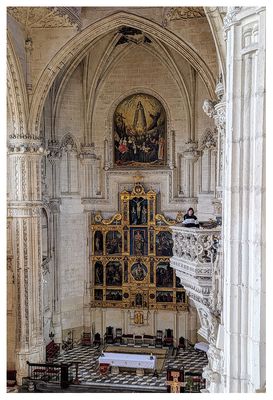
Monastery of San Juan de Los Reyes: Norah on the balcony |

Monastery of San Juan de Los Reyes: Norah on the balcony |
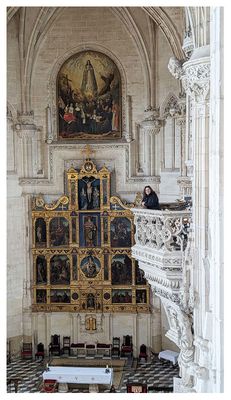
Monastery of San Juan de Los Reyes: Kathy on the balcony |
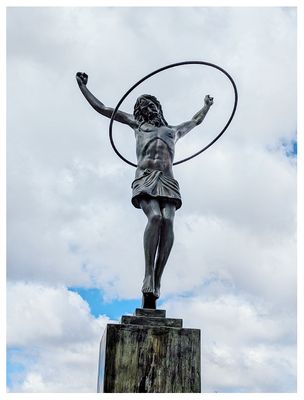
Jesus .... hula hooping? |
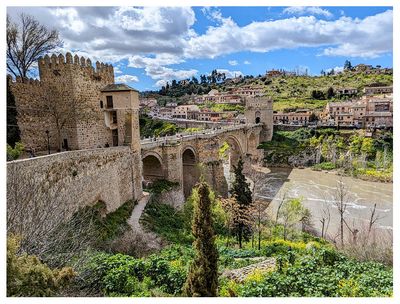
Puente de San Martín |
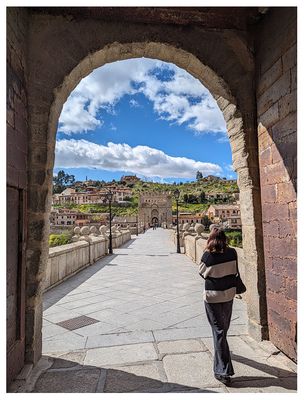
Puente de San Martín |
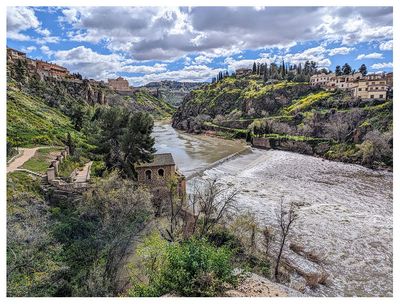
Tagus River |
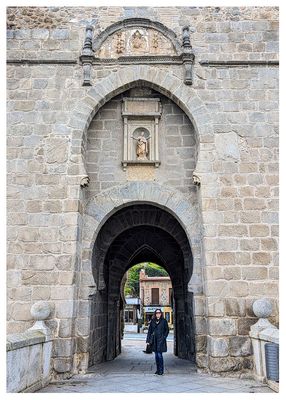
Puente de San Martín |
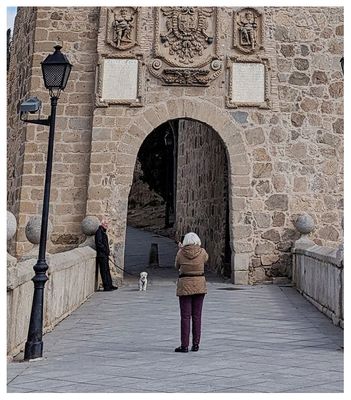
Puente de San Martín: Who's a good boy? |
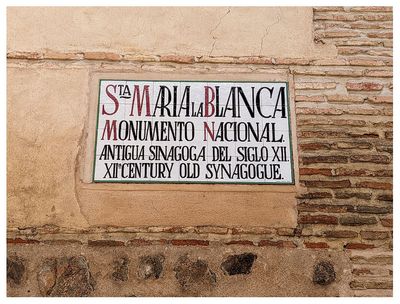
Synagogue of Santa María la Blanca |
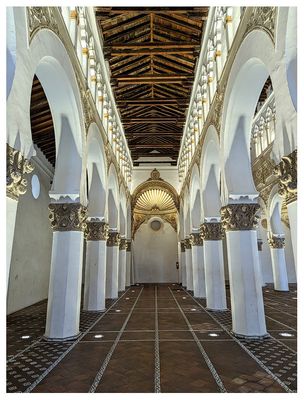
Synagogue of Santa María la Blanca |
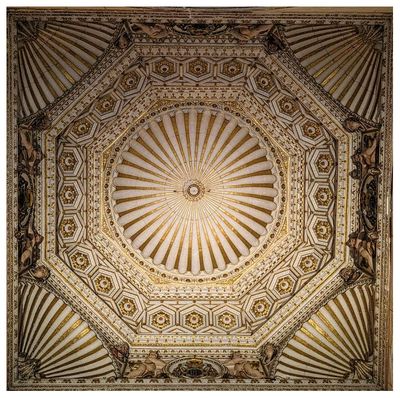
Synagogue of Santa María la Blanca |
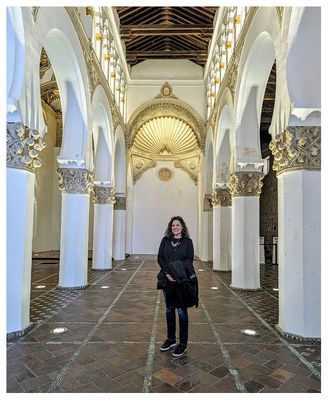
Synagogue of Santa María la Blanca |
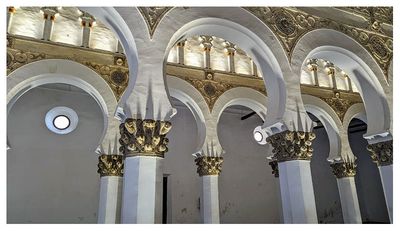
Synagogue of Santa María la Blanca |
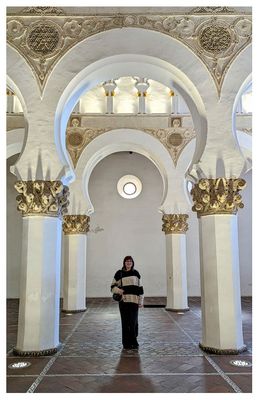
Synagogue of Santa María la Blanca |
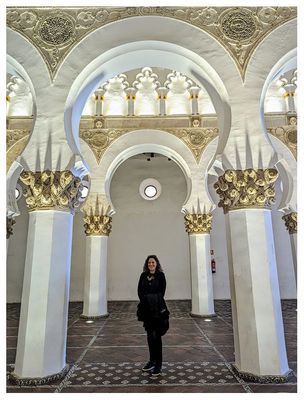
Synagogue of Santa María la Blanca |
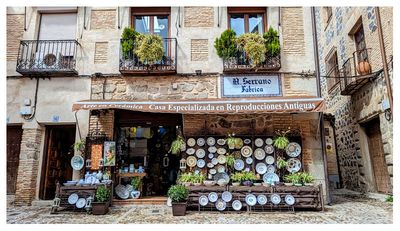
Ceramica J Serrano |
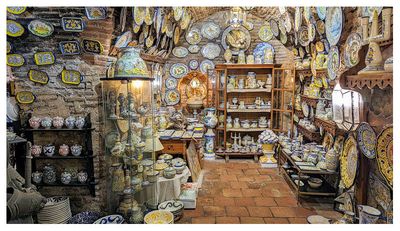
Ceramica J Serrano |
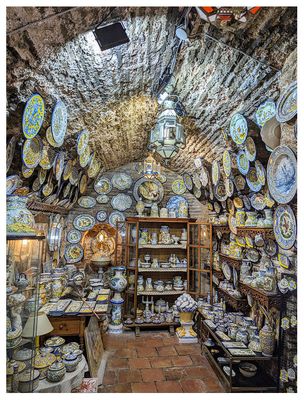
Ceramica J Serrano |

Ceramica J Serrano |
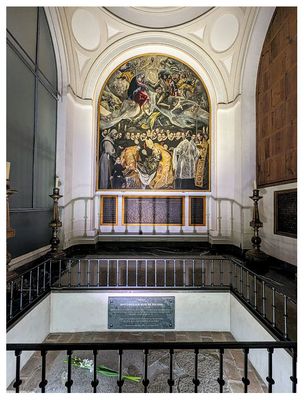
Santo Tomé: El Greco's The Burial of the Count of Orgaz |
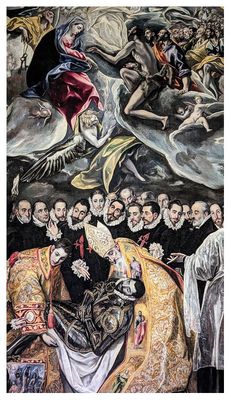
Santo Tomé: El Greco's The Burial of the Count of Orgaz |
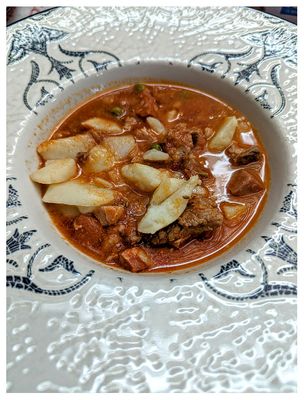
Lo Nuestro Taperia: carcamusas (pork stew) |
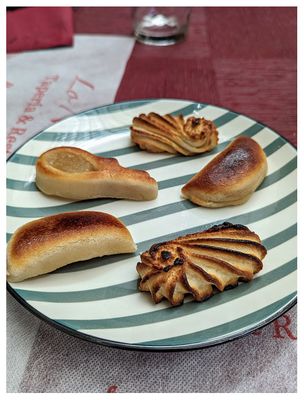
Lo Nuestro Taperia: mazapán |
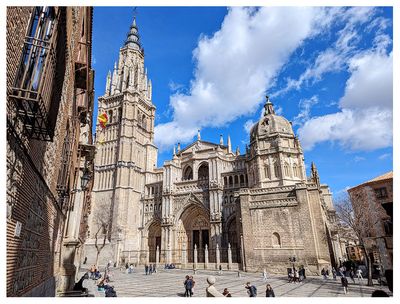
Toledo Cathedral |
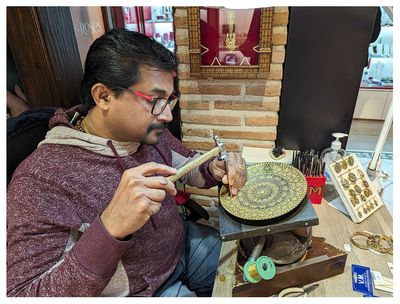
Shopping for damascene souvenirs |
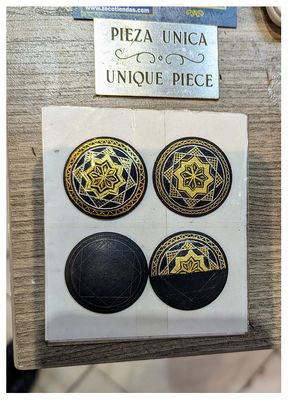
Shopping for damascene souvenirs |
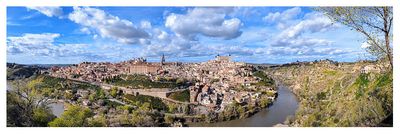
Mirador del Valle |
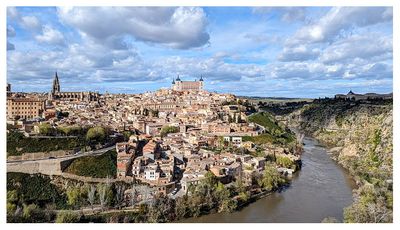
Mirador del Valle |
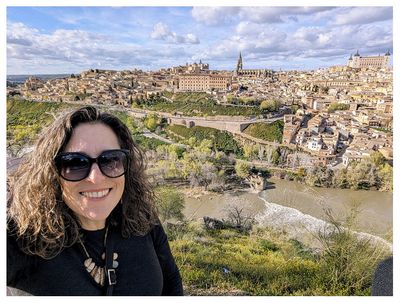
Mirador del Valle |
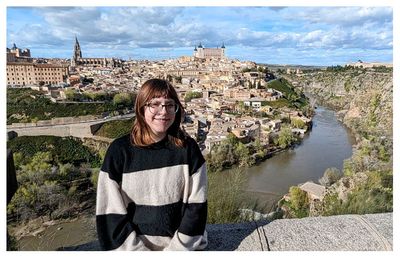
Mirador del Valle |
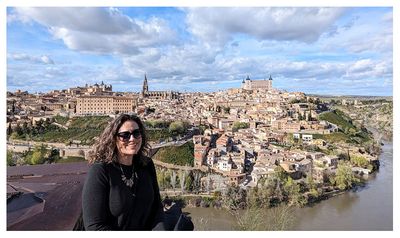
Mirador del Valle |
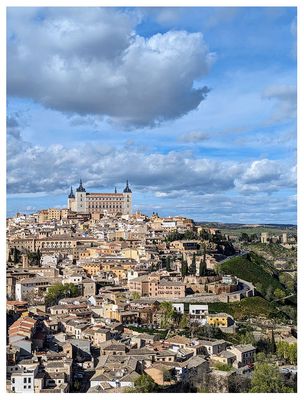
Mirador del Valle |

The Alcázar from Mirador del Valle |
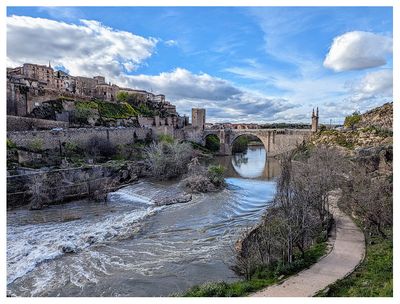
The Tagus River and Puente de Alcántara |
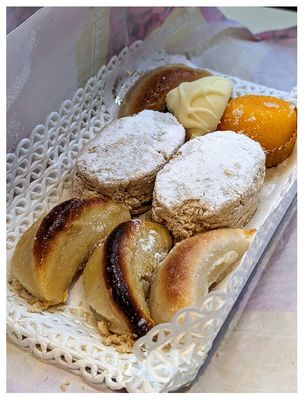
Santo Tomé mazapán |
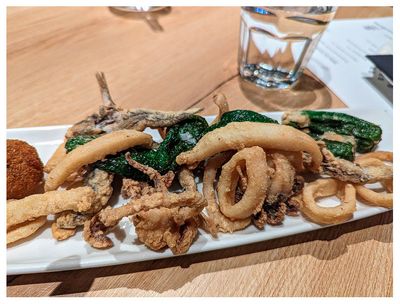
Vinitus: mixed fried fish platter |
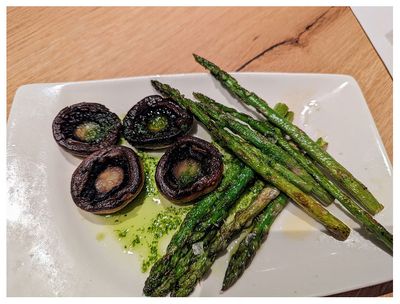
Vinitus: grilled mushrooms and asparagus |
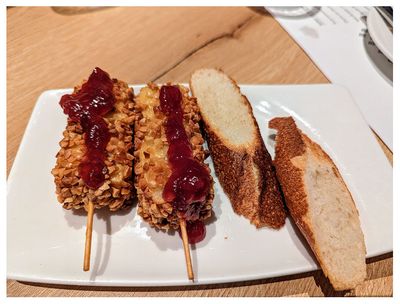
Vinitus: crispy camembert |
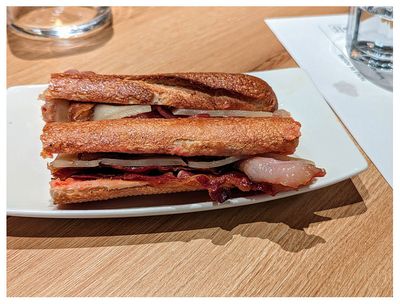
Vinitus: bacon and brie baguette |
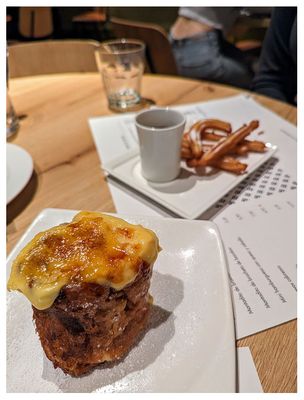
Vinitus: torrija quemada de Santa Teresa and churros |











